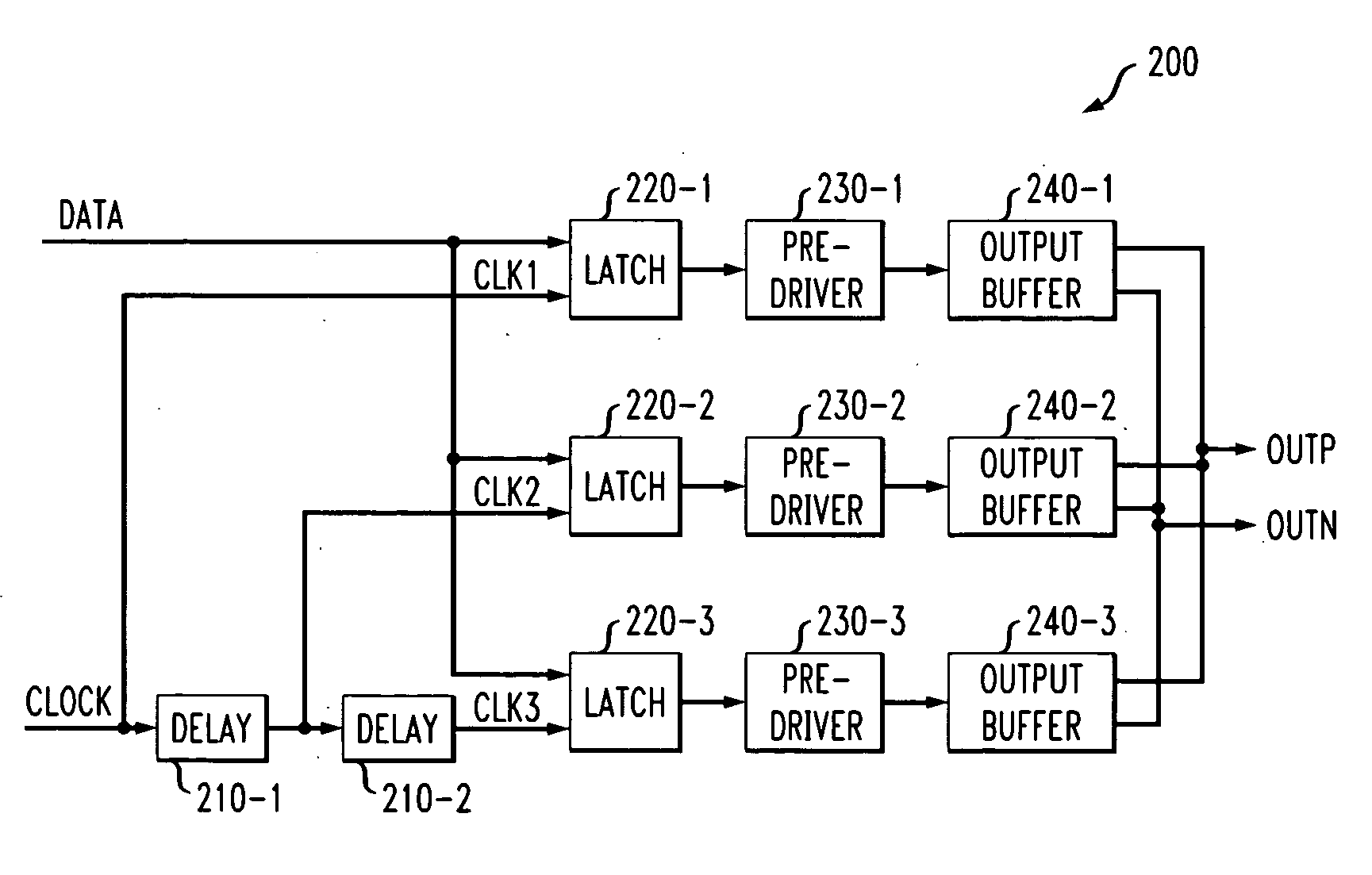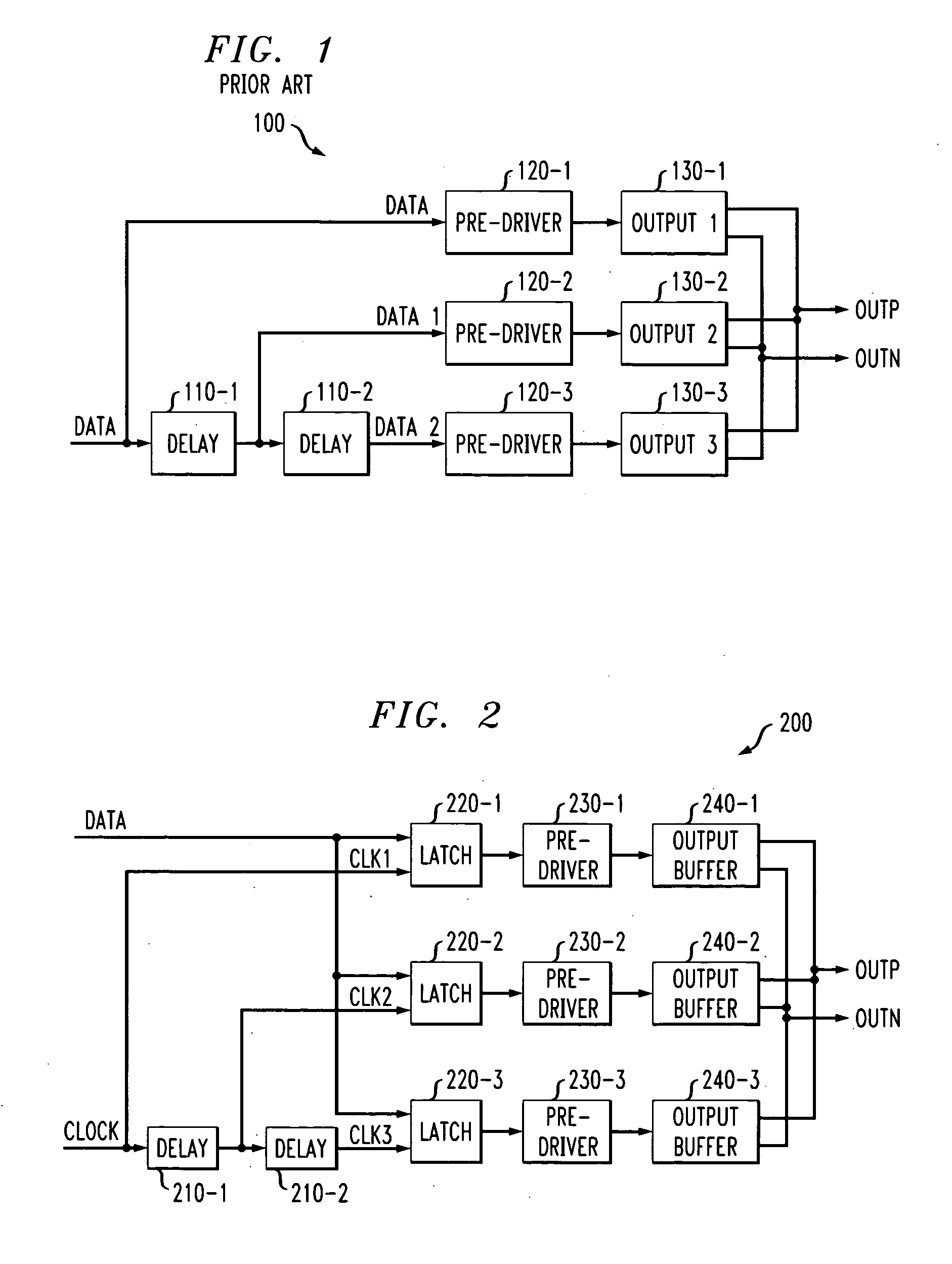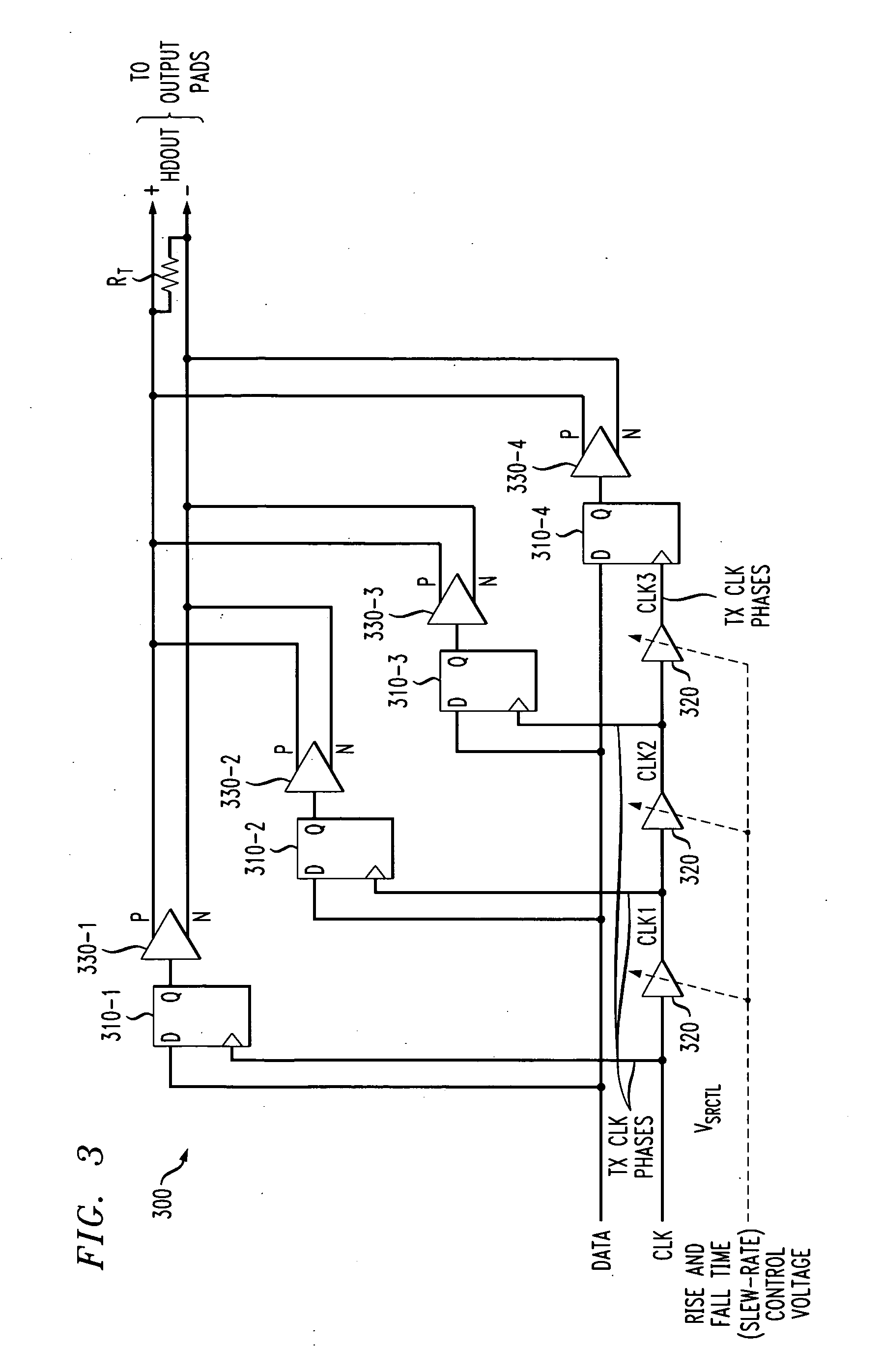Method and apparatus for slew rate control
a technology of slew rate and control method, applied in the direction of pulse technique, amplitude demodulation, generating/distributing signals, etc., can solve the problem of inability to adjust very precisely, the maximum output rate of the buffer is limited, and the conventional rise and fall time control technique is sensitive to process changes,
- Summary
- Abstract
- Description
- Claims
- Application Information
AI Technical Summary
Benefits of technology
Problems solved by technology
Method used
Image
Examples
second embodiment
[0026]FIG. 5 illustrates an output buffer 500 in accordance with the present invention. The output buffer 500 of FIG. 5 includes the output buffer 300 of FIG. 3, as well as a PVT compensation circuit 510. In one exemplary embodiment, the PVT compensation circuit 510 comprises a delay-locked loop (DLL) that generates an analog control voltage, VSRCT. The control voltage, VSRCT, compensates for PVT variations by adjusting the delay, TD, of each of M delay elements 520, such that the total delay, M×TD, is approximately equal to the period of the main clock, TCLK. The DLL 510 also comprises a phase detector 530 and an integrator 540 in a known manner. Generally, each individual delay element in the DLL 510 is substantially matched to the delay elements 320 from the rise and fall time control circuit 300. Thus, TD=TCLKM.
[0027] Since the rise time of the HDOUT waveform (see FIG. 3) is approximately equal to the delay through the three delay cells 320, then the total rise (and fall time),...
third embodiment
[0032]FIG. 6 illustrates an output buffer 600 in accordance with the present invention, that provides finer control of the rise time, TR, than the embodiment of FIG. 5. In the embodiment of FIG. 6, a gain stage 610, having a gain, G, where the G is much less than 1 but may be positive or negative, is employed to allow small adjustments to the rise and fall times. Thus, the control voltage, VSRCT, may be expressed as follows:
VSRCT=(1+G)VCTRL
where G is a small number (positive or negative).
[0033] If the delay of each of the delay cells in the DLL is equal to
TD=AVCTRLα
(where a typical value for a would be −½), then, the derivative of TD with respect to the DLL control voltage, VCTRL, is ⅆTDⅆVCTRL=α AVCTRLα-1=αTDVCTRL.
Intuitively, this expression suggests that a small change to VCTRL results in a corresponding small change in TD.
[0034] For example, if α equals −½ and δVCTRL is a 1% change in VCTRL, then TD would change by approximately: δ TD=(ⅆTDⅆVCTRL)δ VCTRL=α TDδ...
PUM
 Login to View More
Login to View More Abstract
Description
Claims
Application Information
 Login to View More
Login to View More - R&D
- Intellectual Property
- Life Sciences
- Materials
- Tech Scout
- Unparalleled Data Quality
- Higher Quality Content
- 60% Fewer Hallucinations
Browse by: Latest US Patents, China's latest patents, Technical Efficacy Thesaurus, Application Domain, Technology Topic, Popular Technical Reports.
© 2025 PatSnap. All rights reserved.Legal|Privacy policy|Modern Slavery Act Transparency Statement|Sitemap|About US| Contact US: help@patsnap.com



